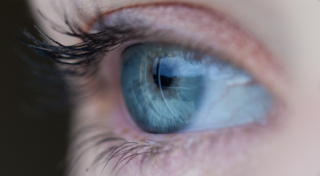Macular Degeneration- The Basics by Yasser Elshatory, MD, PhD
Age-related macular degeneration (AMD) is a common cause of vision loss in people 50 years and older. The single-most important factor in this condition is age, and the longer we live, the more common this condition becomes. A lot of progress has been made in the last ten years in the treatment of AMD with more innovative alternatives in trial today that will decrease the burden of treatment and increase its effectiveness.
Many people with dry macular degeneration do well and have little to no visual symptoms. Such patients require observation alone, as they only possess early features of the condition known as drusen, which are a deposition of material (protein and lipids) under the retina. If these drusen are large enough or numerous enough, an over-the-counter vitamin containing zinc, copper, lutein, xeaxanthin, vitamin C and vitamin E has been found to reduce the risk of progression to more advanced stages of macular degeneration by 25%.
Image showing hallmark deposits of drusen in a patient with dry macular degeneration.Patients can decrease the risk of progressing to advanced stages of macular degeneration by not smoking, eating a lot of vegetables, and monitoring vision at home with a grid or graph paper known as an Amsler grid. The Amsler grid is sensitive at picking up sudden changes that arise when patients develop the wet type of macular degeneration, where there is bleeding or leakage of fluid under the retina. Untreated, this bleeding and leakage can cause scarring under the retina that can lead to a permanent blind spot in the center of one’s vision. Treated with regular injections, patients visual outcome with wet macular degeneration is oftentimes preserved, if not, improved.
While sight saving, frequent injections of medicine to reduce leakage and bleeding from wet macular degeneration are needed. The three medicines (Avastin, Eylea, Lucentis) currently in use, only last in the eye 4-8 weeks.
Images showing an area of hemorrhage and scarring from wet macular degeneration in color photos and special fluorescein angiography images.
Macular degeneration can lead to a blind spot in one’s vision even in the absence of bleeding or leakage from abnormal blood vessels. This can result from a loss of the light sensing cells (photoreceptors) and their supporting tissue (retinal pigment epithelium). This tissue loss is referred to as geographic atrophy. Injections blocking a very specific component of one’s immune system, known as the complement system, are being evaluated to reduce this process from occurring. Several factors have been or are being tested along these lines, but nothing has shown success to date. However, it is still too soon to rule these avenues of research out.
Here are the most important things macular degeneration patients can do for themselves:
Monitor vision between regular eye exams at home with an Amlser grid for sudden changes.
Alert your eye care provider of these changes immediately, as early detection and treatment may prevent vision loss
Avoid smoking
Eat a balanced diet with vegetables
Wear sunglasses
If recommended by your eye care provider, take the AREDs vitamin supplement which may also help reduce the rate of progression of macular degeneration.
Note: The above images were copied from my article on age-related related macular degeneration that can be found on eyewiki. https://eyewiki.aao.org/Age-related_macular_degeneration



Comments
Post a Comment